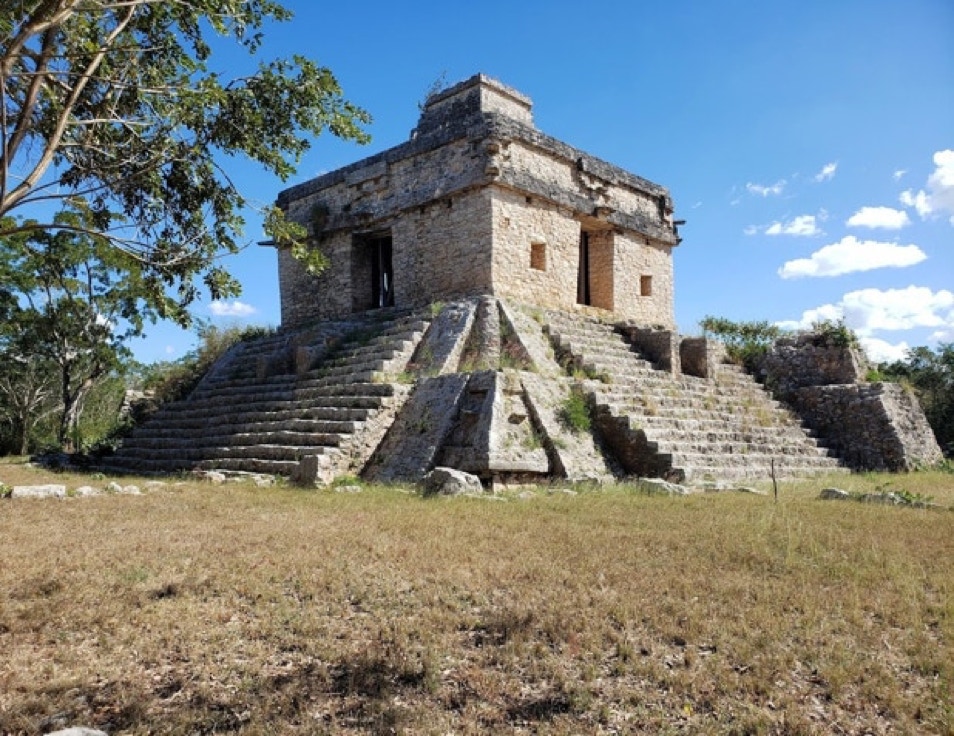
3. TEMPLE OF THE SEVEN DOLLS (TEMPLE OF THE SUN,) DZIBILCHALTUN, (c. 500 CE) The Temple of the Sun was discovered only in 1946 when some masonry was found protruding from a rubble mound on the outskirts of Merida. Like many Mayan temples this one appears to have had multiple building stages. The earliest dating around 300 B.C.E. gave the temple its name when some flints and clay figurines were found, probably part of its dedicatory cache. (They are in the site museum and shown on slide 12.) The teocalli or temple we see today dates from the Early Classic period around 500 C.E. and consists of two terraces 23m and 8.5m square with al slope of 61 degrees, radial (on all four side) staircases and alfardas (ramps or low balustrades) beside them. The cella occupies the entire upper terrace and has doors on all four sides with a corbel-vaulted corridor surrounding them and a central light shaft open only on the east and west. It has a large openin gon the south which may have had some astronomical function, as do many of the stelae dotted around the city. But this tower or "cap" may also have functioned simply as a cresteria or "roof comb," a backing for stucco sculpture. Between the ataduras (binding moldings or cornices) bordering the facades, Chac masks were placed over the doors and on the corners with a frieze of snakes and griffins. The temple's most notable architectural feature is the two small windows - surprisingly the only ones in all of Mayan architecture. In light of the Chac masks on the corners, these may have been intended to suggest that the entire east facade was such a mask. Buildings overtly simulating masks were characteristic of the Chenes style of architecture which flourished at a later date in the middle of the Yucatan peninsula. An example would be the western temple at the Pyramide del Aldivino (Pyramid of the Sorcerer) from the 9th Century at Uxmal, the pre-eminent Puuc site.. The temple is otherwise unimpressive considering the pyramids built at the same time at sites in the Peten such as Tikal or Palenque. It has reminded some of a birdhouse (although possibly one for a "feathered serpent.") It is perhaps best known for the crowds which gather at sunrise on the vernal equinox to see a blaze of sunlight pierce the east and west doors. (At sunset on the same days 1oo km to the east, the dedicated tourist can see serpents slithering down the balustrades of "El Castillo," the Temple of K'uk'ulkan at Chichen Itza. This accounts for the temple's incongruous association with the sun despite the prominent presence of Chac, the god of rain and overcast skies.